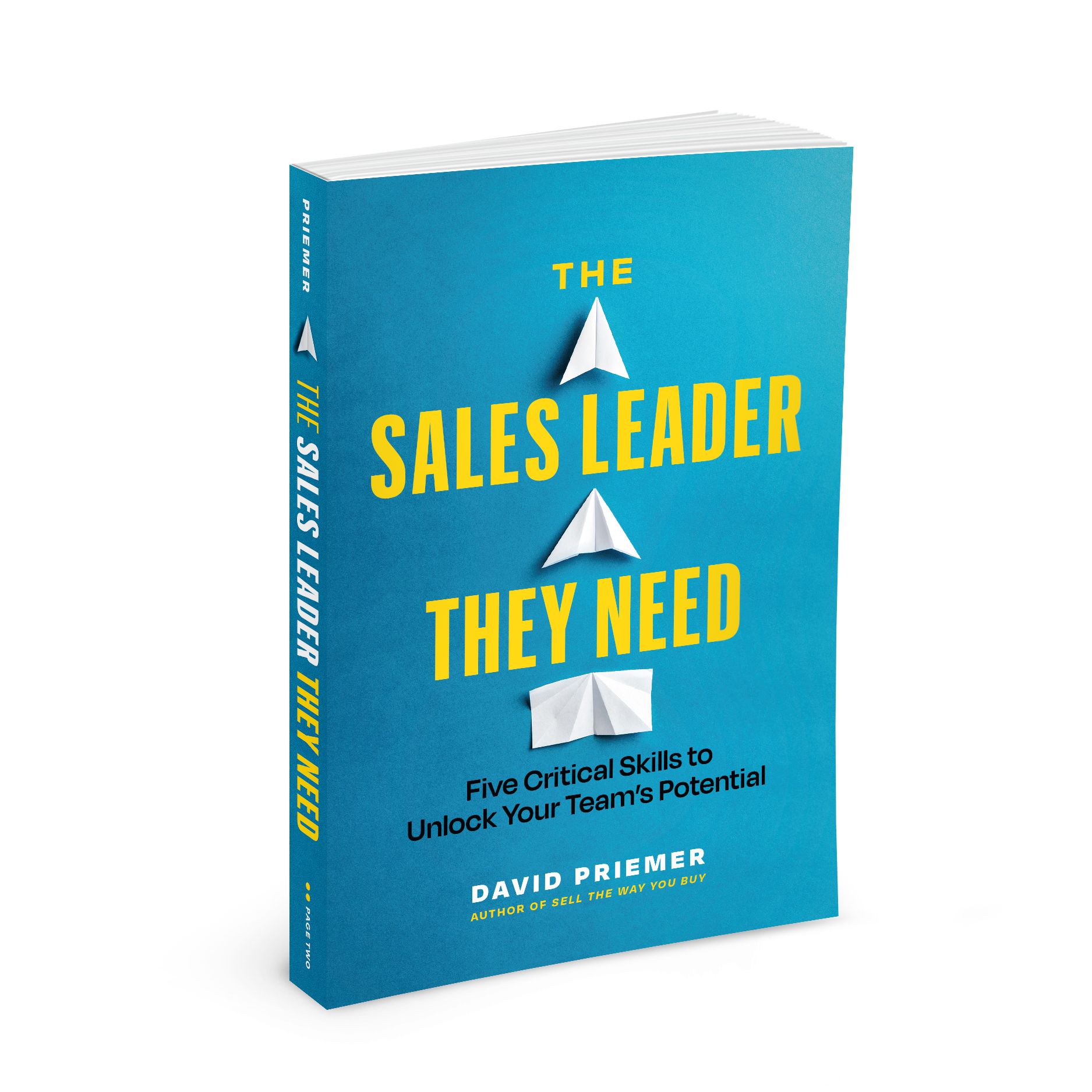The Best Open-Ended Discovery Question
When it comes to running high-impact sales discovery, one of the areas so many reps struggle with is asking engaging discovery questions that customers actually want to answer! In other words, how choosing the right questions can help you avoid “politely interrogating” your buyers and encourage them to open up about the pain points, business goals, and solutions you’re after.
In my book and on this blog, I’ve spoken about the types of discovery questions that buyers like answering the most (according to science).
But there’s one particular open-ended discovery question that I always recommend to my clients. And the best part is, you can actually build your own version of this question from scratch using a tool I call my “open-ended discovery question builder”.
The reason why this strategy works so well is because it’s so simple, yet it ticks the boxes on the three most important elements of a good discovery question:
- Focus
- Alignment
- Novelty
Let me share the formula with you first, then I’ll break down why it’s so impactful.
Open-ended Discovery Question Builder
The formula for building your own version of this question is simple. You ask your customer to finish this sentence:
“I could [INSERT GOAL] in [INSERT TIME HORIZON] if ______________.”
Step 1: based on the information you’ve gathered from the customer thus far and the context of your discussion, fill in the first blank with an outcome they’re trying to drive. For example:
“sell more software”
“work better with other departments at our company”
“deliver better customer service”
“vastly improve the security of our network”
“engage our remote employees”
Step 2: fill in blank two with the timeline they’re looking to drive the result in. For example:
“this month”
“this quarter”
“this year”
Step 3: challenge them to complete the open-ended third blank with ONE (i.e. the most impactful) solution to make it happen.
For example, you could say:
“Tim, if you don’t mind, complete this sentence for me, ‘My team could sell more software this quarter, if…’ What’s the if?”
“Julie, if you don’t mind me asking, can you complete this sentence for me, ‘I could retain more of my remote employees over the next year, if…’ What’s the if?”
“Alex, I know you mentioned delivering better business outcomes to your customers was a key focus for you. But if you had to complete this sentence for me, ‘I could deliver better business outcomes to my customers this year, if…’ What’s the if?”
Why This Works
Why is this approach so effective? Let’s break it down:
1. Focus: asking open-ended, thought-provoking questions about your customer’s business but then only allowing them to select the most impactful “if” focuses them. It helps your customer cut out the noise and hone in on the most important insights. What’s that ONE thing that would render all the other potential options easier or unnecessary.
2. Alignment: By prompting your customer to discuss where they feel their needs are and what support they crave, you can then take this information and clarify whether or not your services are the solution to their current problem(s). Maybe you’re the perfect fit for the job or maybe you’re not at this time – either way, you find out quickly and easily with this one simple question.
3. Novelty: Fill-in-the-blank questions have an element of novelty to them. They aren’t the same standard set of discovery questions your customer’s been bombarded with by EVERY other seller. You may even get a, “that’s a really good question” when you ask it! With the open-ended discovery question builder, you put your customer in a position of control and they can take this control and run in any direction they like. This makes the process of revealing their problems significantly more fun than answering, “what are your problems and what support do you need?” or the dreaded, “what keeps you up at night?”.
The questions you ask during discovery motion are, of course, just one piece of the puzzle. Other factors like how you ask questions (i.e. tone, body language, etc.), the order you ask them in, and how you listen to answers also significantly impact the success of discovery conversations.
But at the very least, arming yourself with this powerful open-ended discovery question formula will set you up for vastly greater sales success!
Free training video: My Favorite Open-Ended Discovery Question
Bonus video: How to do Better Discovery by Becoming a ‘Question Barista’
We promise never to send you junk or share your email! Just helpful sales insights.













